Ultimate Industrial Desk
by kevincefalu in Workshop > Furniture
2522 Views, 33 Favorites, 0 Comments
Ultimate Industrial Desk
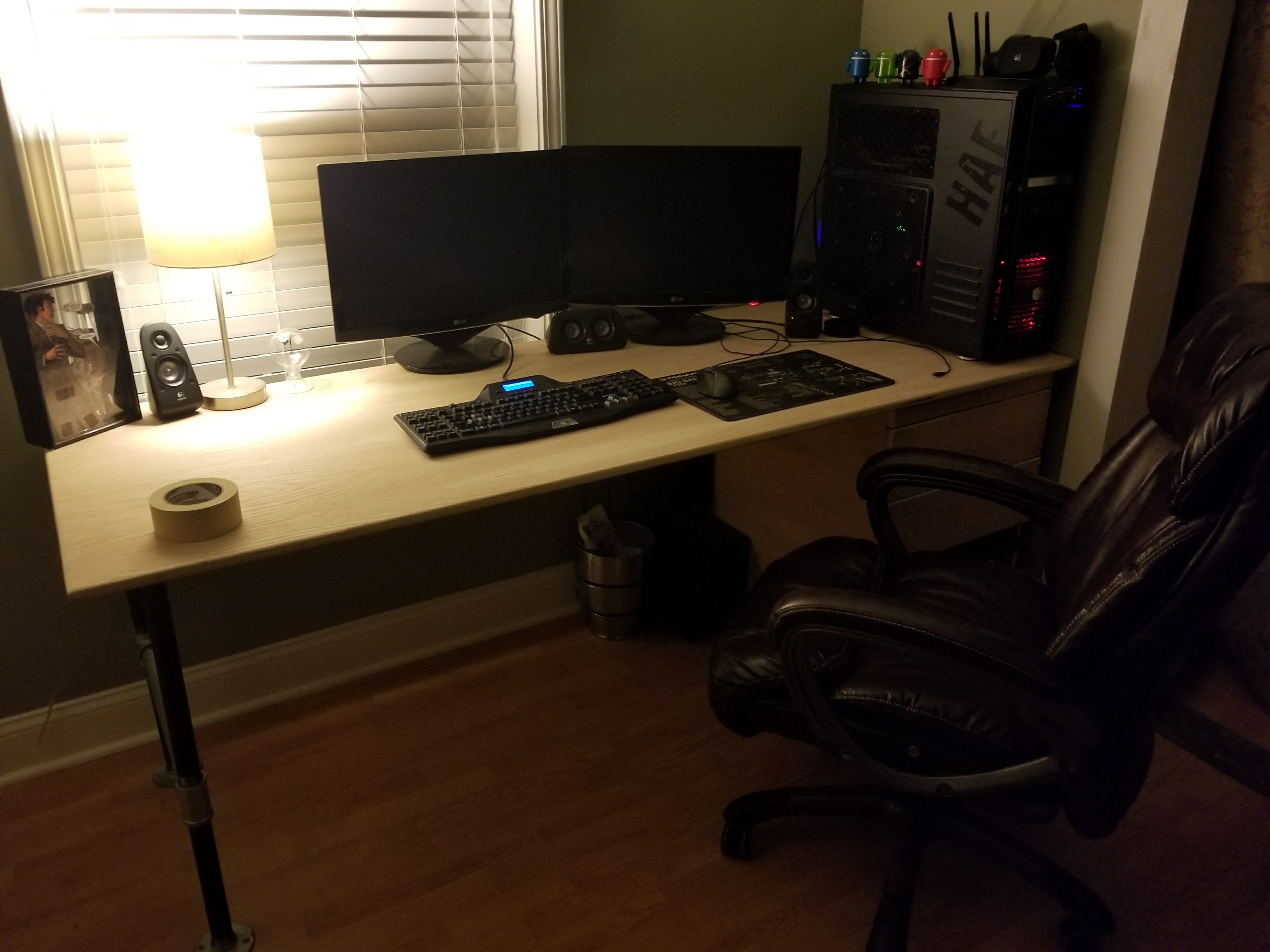
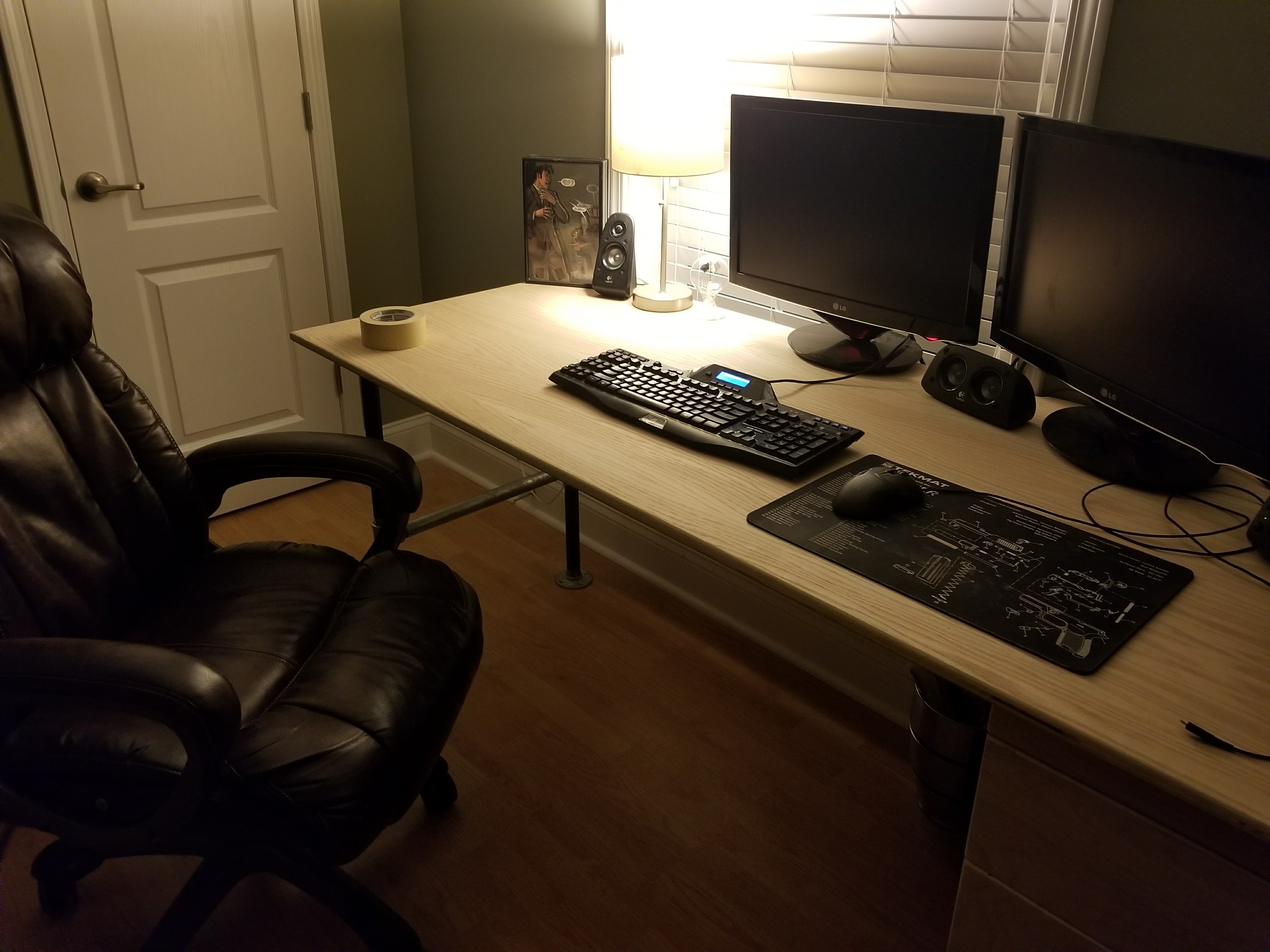
Recently, I've accepted a new position as a software engineer for an awesome company, in Louisiana. Part of the benefits package for the development team is to allow their engineers to work from home up to three days a week! I can't wait, but my second thought after how magnanimous, and forward-thinking this benefit is, was "ugh, but my desk sucks!!" Time to brainstorm!
The Rearview Mirror (a.k.a. Design)
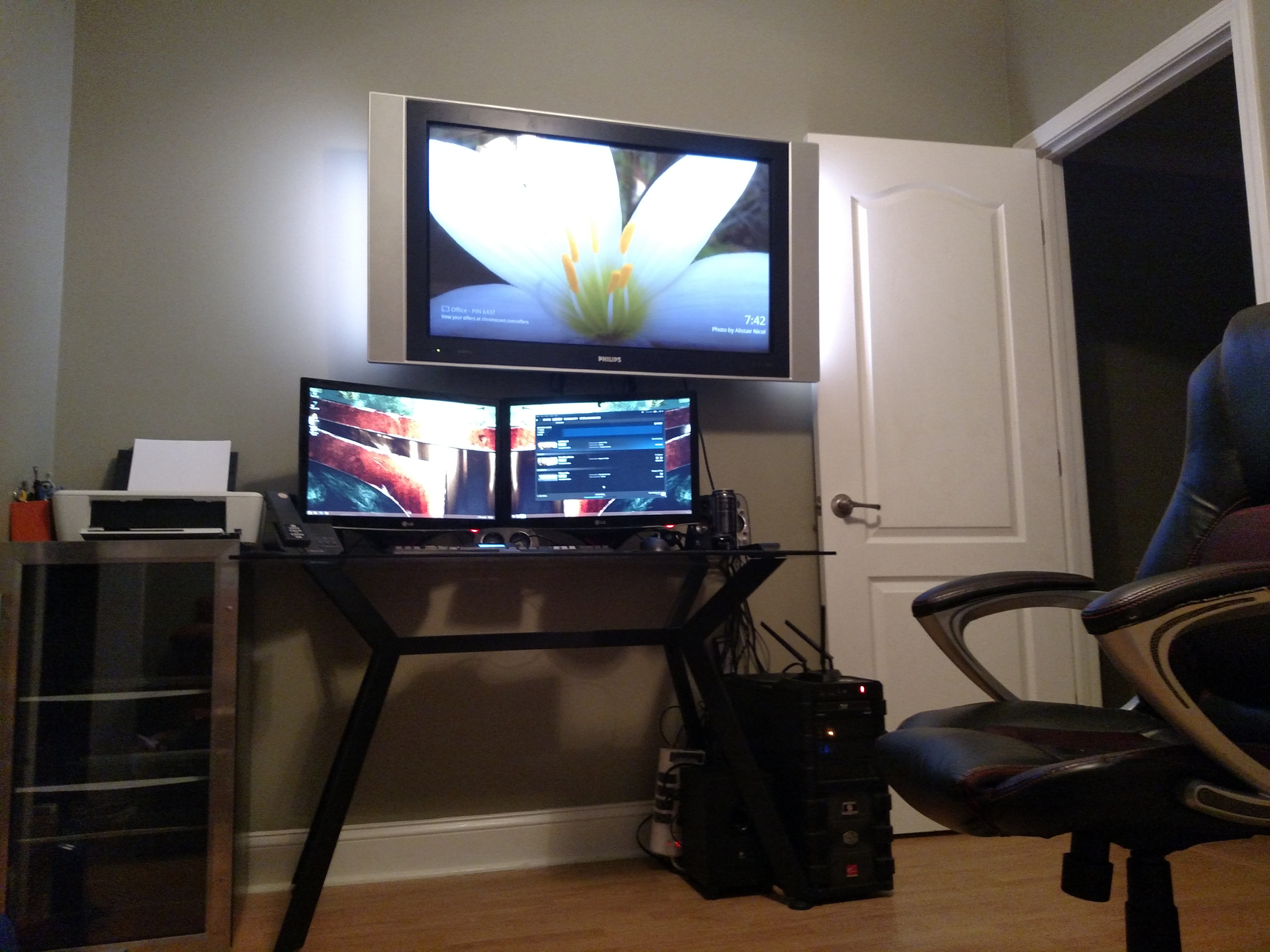
We start step 1 off with seeing the desk I'm ditching, through the design of the desk I'd always dreamt of. I designed the entire kit in SketchUp. This afforded me the opportunity to not only get a feel for what the final product would look like, but also to efficiently lay out the pieces on as few sheets of furniture-grade plywood as possible. Let's not break the bank on this project, shall we?
I started by figuring exactly what I didn't like about my old desk. As neat as the glass/metal combo was, it's biggest downfall was being very small. The thing barely held my monitor set-up, much less afforded room for a keyboard, mouse, work laptop, and room for notes, books, and other projects. I needed something with room to spare. The opposite wall had recently become vacant (wife moved the couch), so I started taking measurements. The biggest I could go was 6.5' x 30". Now we're talkin'!
The desk would also need to have a ton more storage. The old desk didn't have any storage, so that bar had been set fairly low. A half-file cabinet holding up one side of the desk should do, nicely.
And after it's all done, the desk had to look like a solid piece of furniture. No point in building something that was going to look ratty, and fall apart 6 months into using it.
At this point I felt I had a pretty good plan on what I wanted: to the CAD software!
Step 2: Who Said CAD Was Just for Engineers? (a.k.a. Teaching Myself How to Draw in SketchUp)
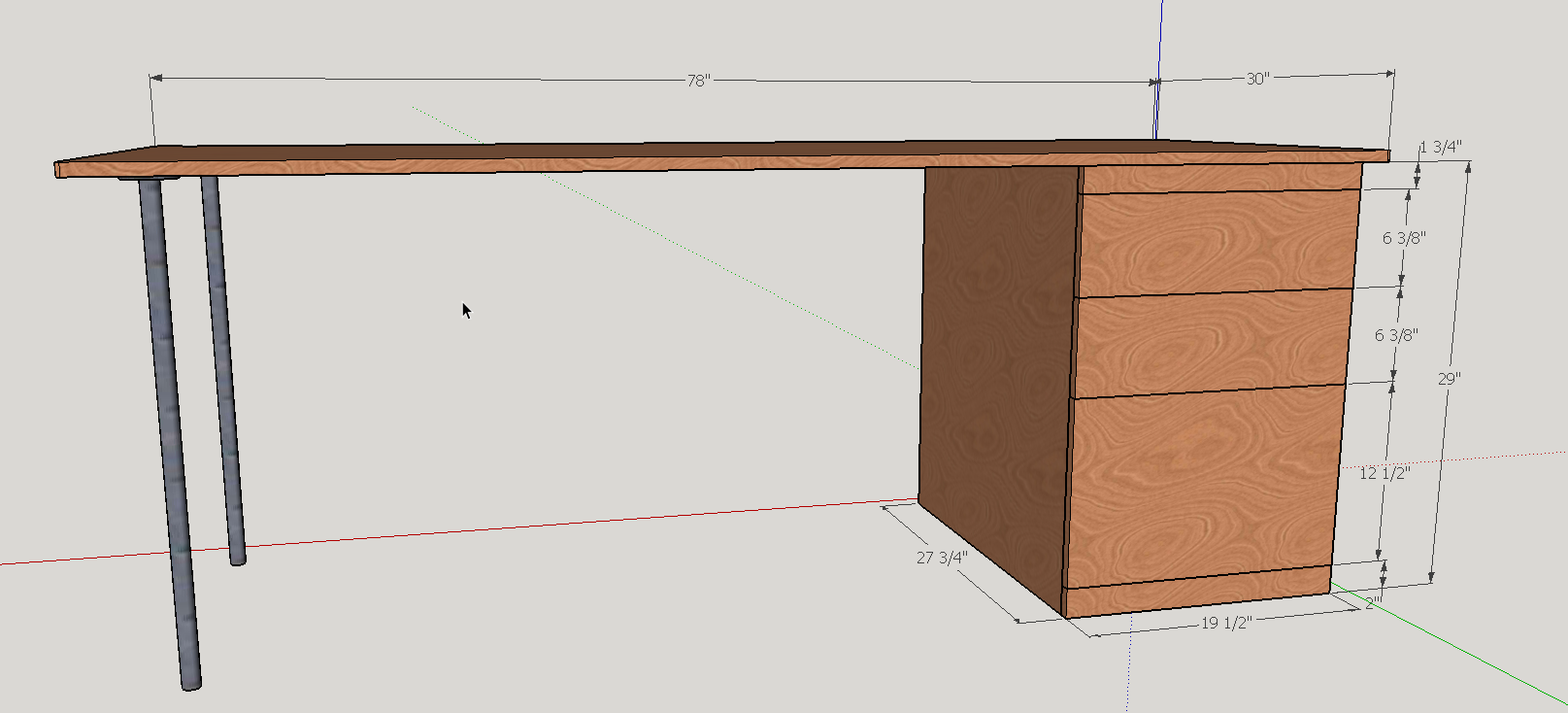
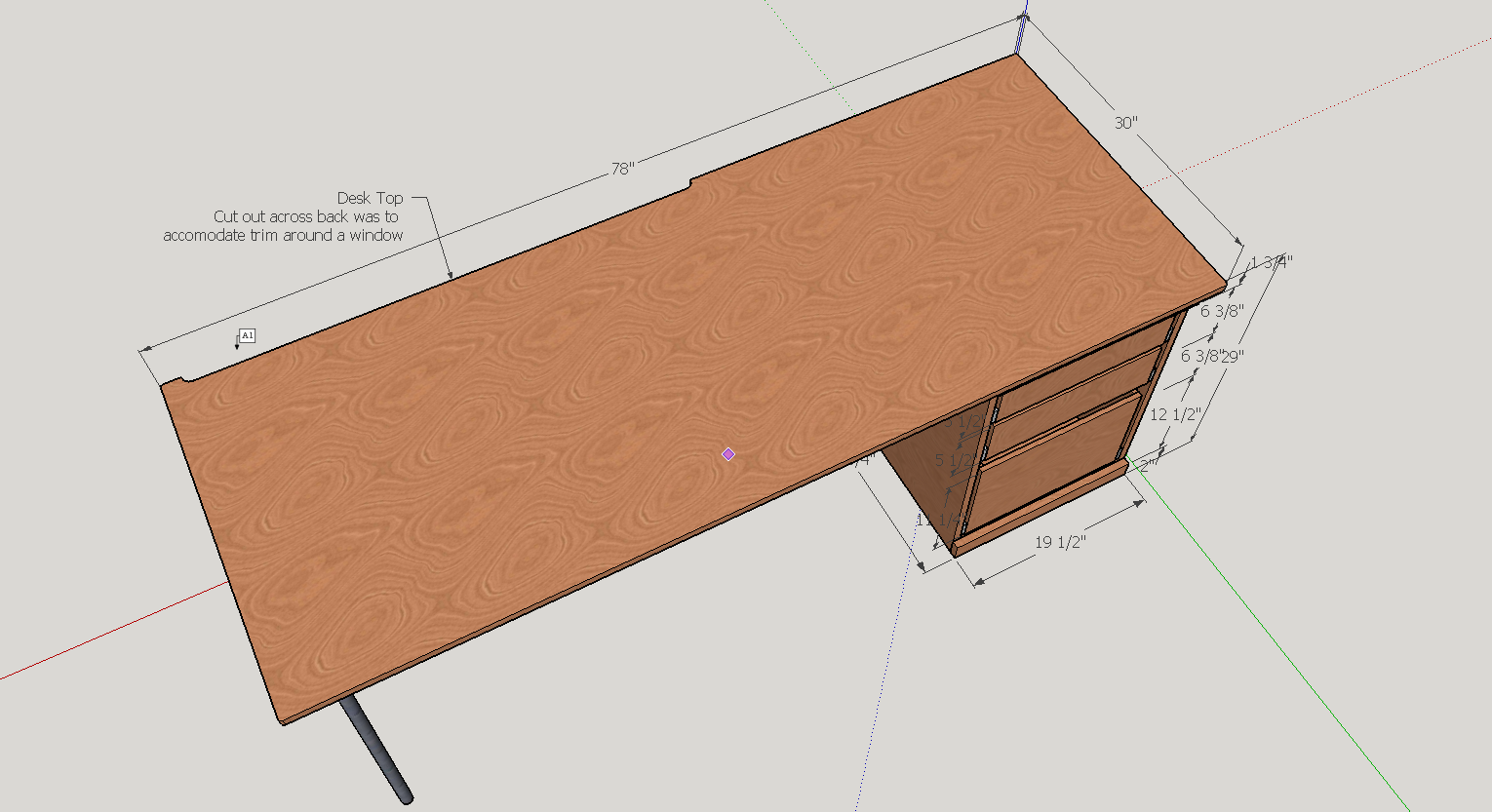
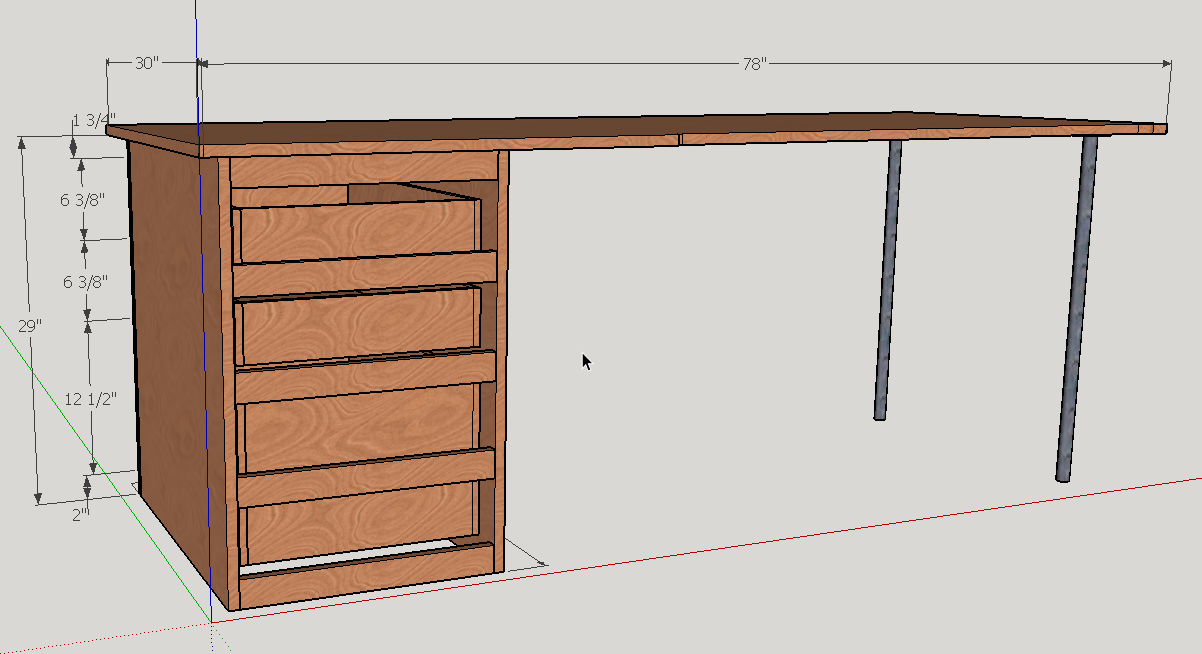
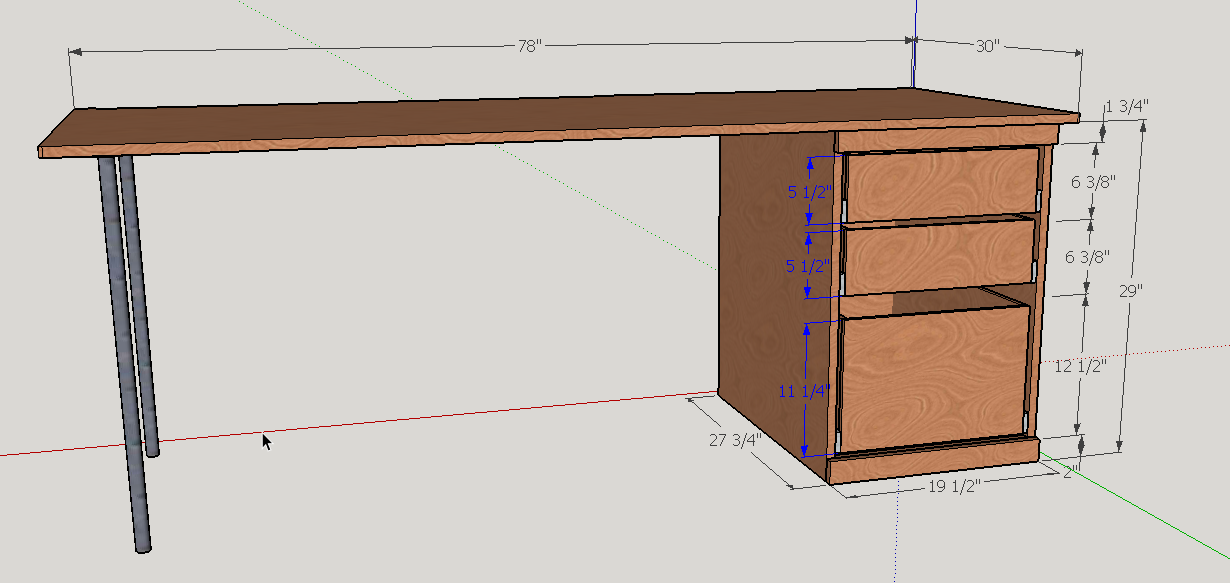
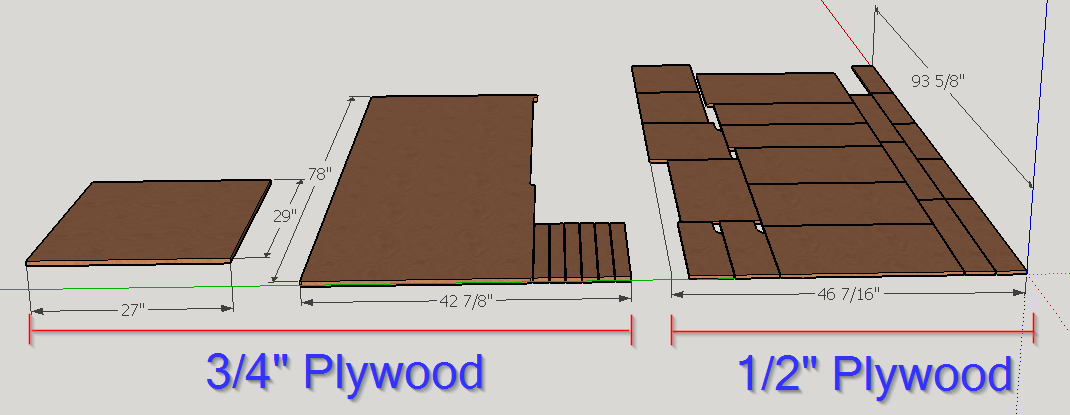
When I started this project, I'd really never done a whole lot of meaningful work in CAD software. Sure, I'd messed around, but never attempted something quite this lofty, and certainly not so big. There are plenty of people with much more experience in drafting: if you're looking for a tutorial on this part, I'd highly recommend finding a good tutorial series, on YouTube, like I did. I've included the SketchUp documents for those interested.
Suffice it to say that after stumbling through about 4 drafts, I finally arrived at the attached design. I must say, I was rather proud of myself, and totally blown away at how easy it would be for me to take the drawing into reality. At this point, my fingers were itching to get started!
As shown in the screenshots of my model, this desk was going to be pretty sizable.
- The Top would be 78" x 30";
- stand 29.75" tall, including the thickness of the plywood; and
- be supported by two 1" diameter black iron gas pipe legs
- and one 27.75" x 19.5" x 29" three drawer file cabinet.
- Each small drawer would be 5.5" deep,
- and the hanging folder drawer would be 11.25", to accommodate standard sized folders.
When all the pieces were tallied up, I counted 8 pieces of 3./4" plywood, between two 4' x 8' sheets, as well as twenty pieces of 1/2" plywood, all fitting on one sheet. In latter steps, I actually change the bottoms of each drawer out to 1/8" plywood, fitted into a channel cut on the insides of the drawer faces. Four pieces of plywood, and out the other end comes a desk? I'm into that!
The Struggle (a.k.a. Making It Out of Home Depot Without a Second Mortgage)
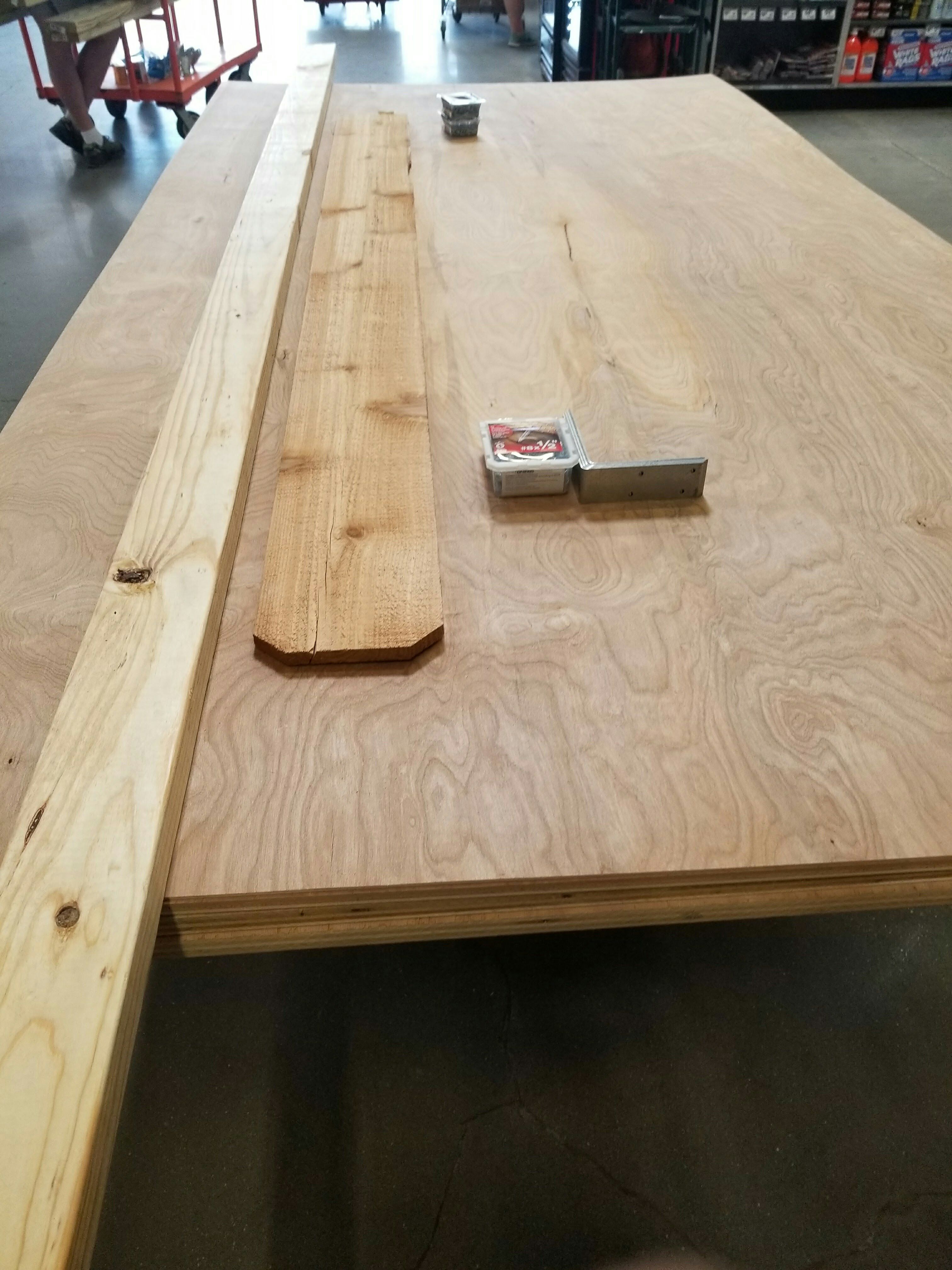
Thankfully, I had most of the tools I'd need to build this project between myself, and my Dad's collection (many thanks to them for letting me hog their garage for a couple of days, while I built the desk).
My shopping list was pretty straight forward:
- (2) sheets of 4' x 8' x 3/4" birch plywood
- (1) sheet of 4' x 8' x 1/2" birch plywood
- (1) sheet of 4' x 8' x 1/8" birch plywood
- (1) box of 1-1/4" Kreg pocket screws
- (1) box of 1" Kreg pocket screws
- (3) sets of 24" soft-close drawer slides
- (2) 1" x 32" pieces of black iron gas pipe
- (1) 1" x 18" galvanized iron nipple
- (4) 1" galvanized iron floor flanges
- (2) 1" galvanized iron tees
- (1) bottle of wood glue
- (1) half pint of weathered grey stain
- (1) half pint of polyurethane
Pretty much the rest was dug out of either my shed, or my parents' garage. All in total, this project roughly cost about $300, and I think that it turned out to be WELL worth the money.
Couldn't Have Done It Without Kreg (a.k.a. the File Cabinet)
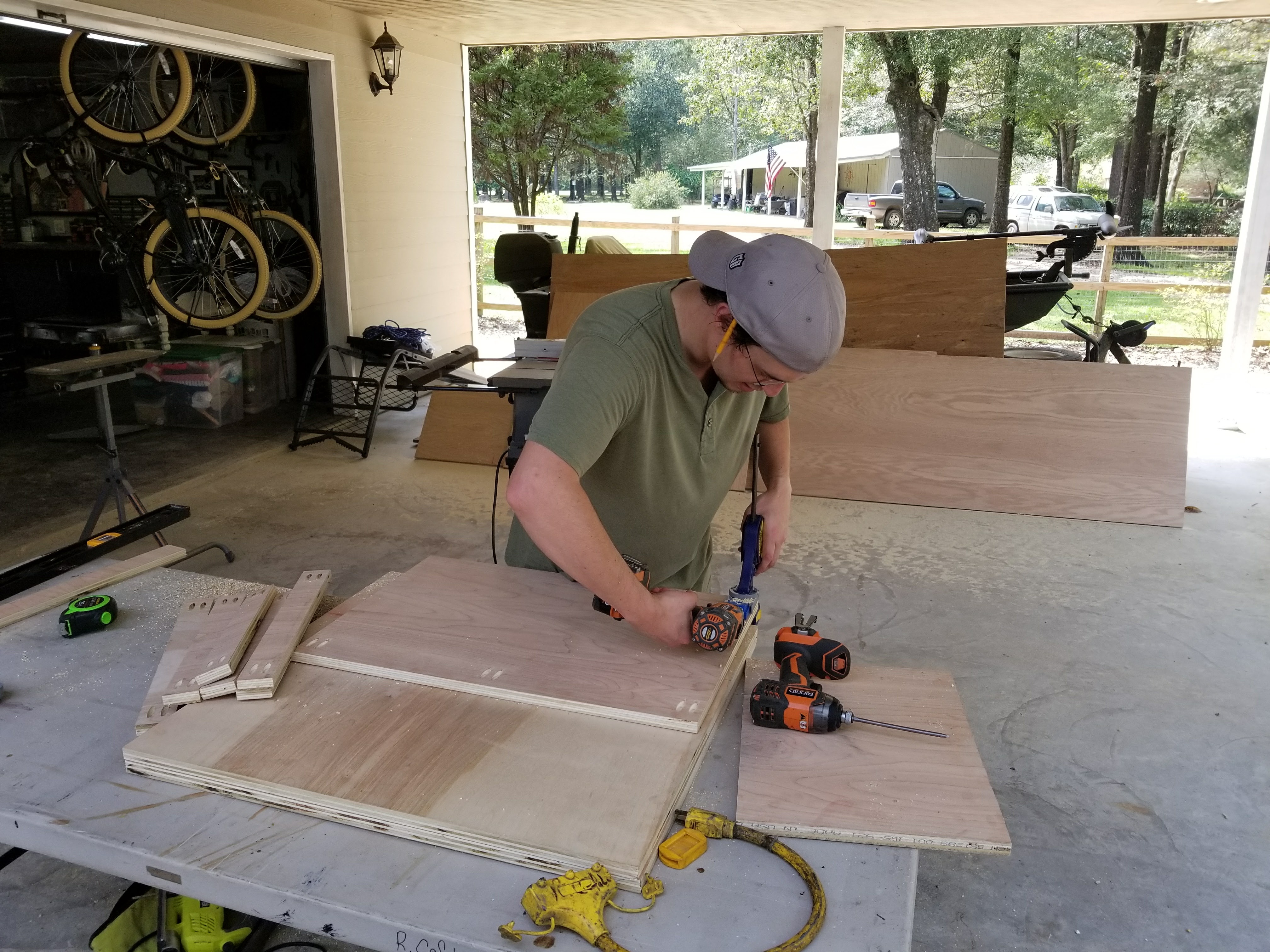
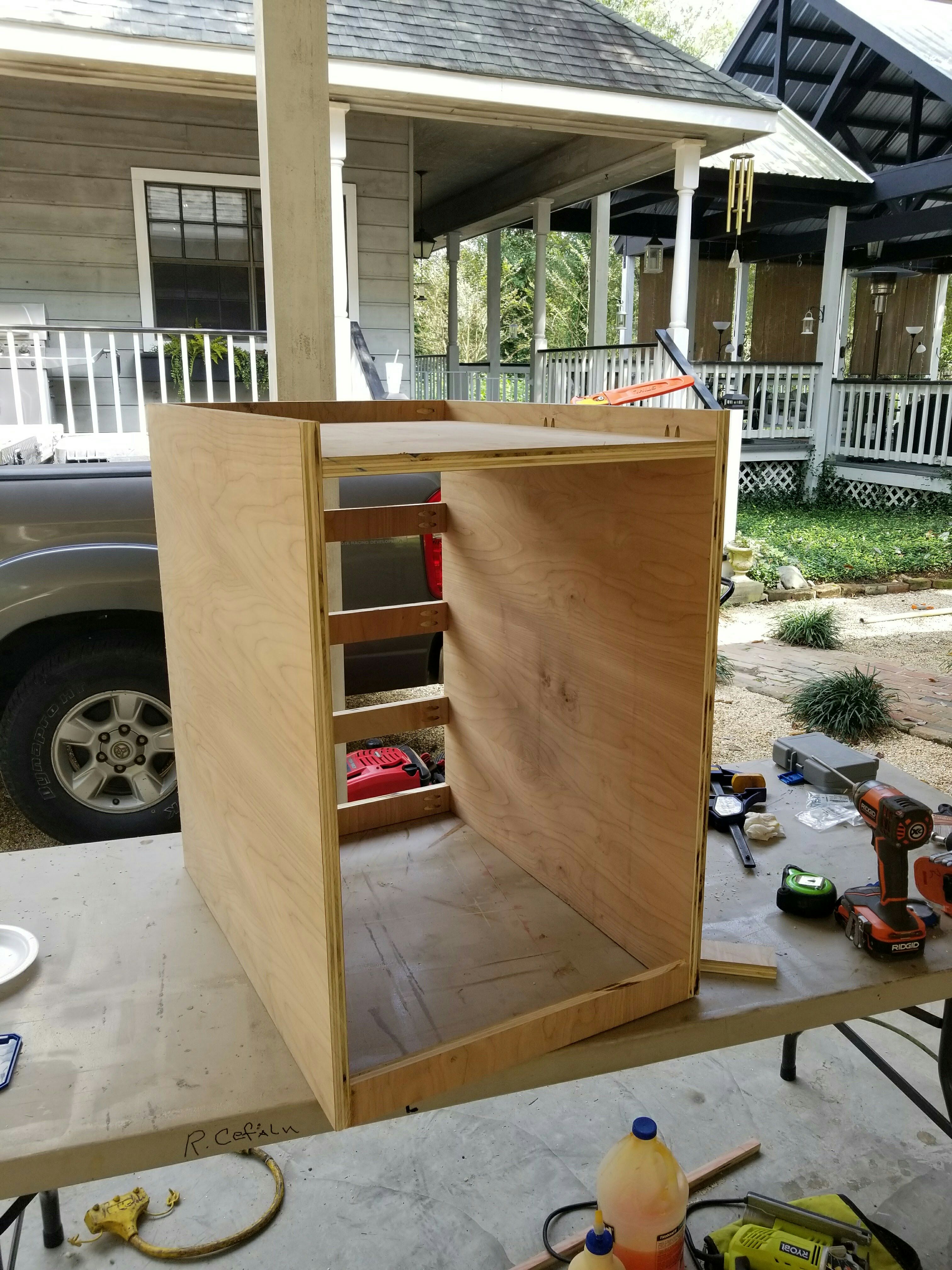
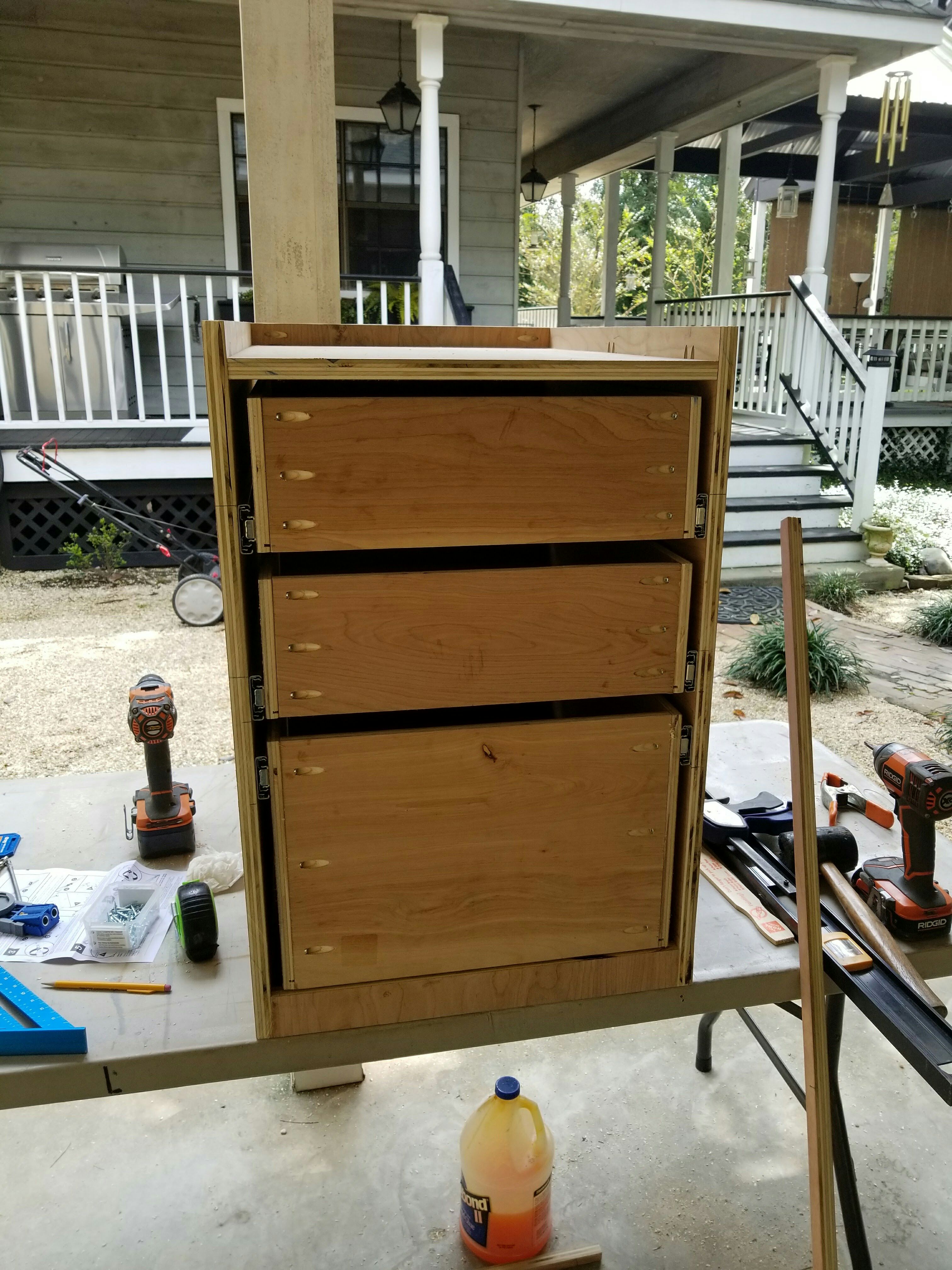
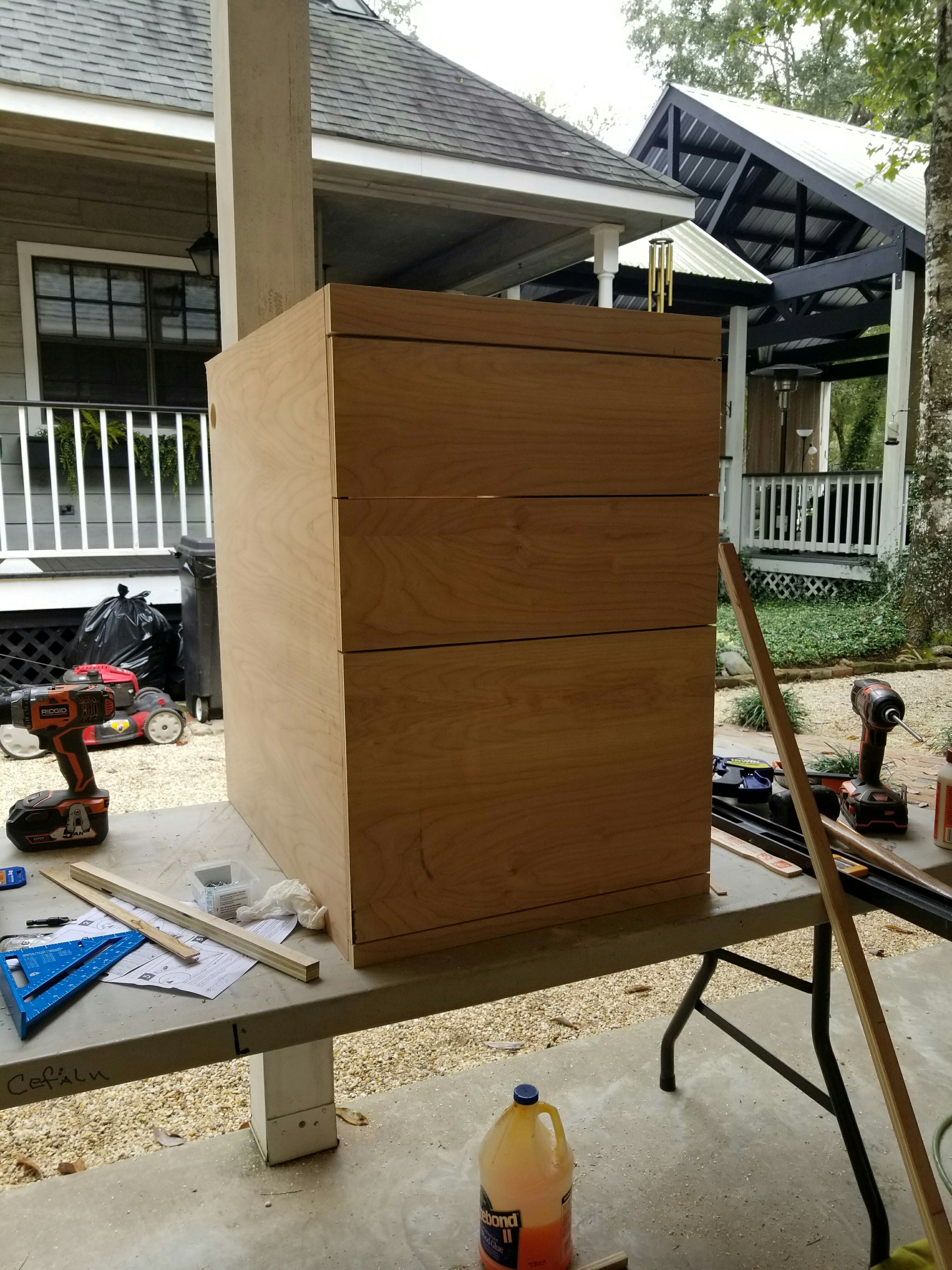

I don't have any pictures of the top, by itself, but it was a fairly straight-forward cut: take a sheet of 3/4" plywood, and make it 6.5' x 30". See? Simple?
Where things got fun was the file cabinet. I'd never tried building a file cabinet before, but what better time to try than now. I started by making the shell. Again those measurements were 27.75" x 19.5" x 29". I recessed the top most panel for a possible future "slide-out" desk extension, should the mood strike me after I give the desk some use.
After supporting the shell with far, FAR too many pocket screws (those things are awesome!), I moved on to building the drawers. Each drawer goes 24" deep, with full-length slides, and an 1/8" bottom, inlaid in dado'ed channels inside each face. The only difference is the one large folder drawer.
- While the smaller drawers are 24" x 17" x 5.5",
- the larger drawer is 24", x 17" x 11.25"
After building the drawers, I turned to the arduous task of installing them. I honestly thought that drawer slides would be incredibly simple, but after about an hour of scratching my head, I finally managed to work it out. A couple of clamps, and a 2' level, and I had it totally under control!
Finally, I spaced out some scrap wood, and figured the best size for each drawer face, all while making sure each face had about 1/8" clearance between each other to keep the drawers from binding. The small drawers turned out to be 6 3/8" x 19.5", while the large drawer face was 12.5" tall.
File cabinet: check!
Half the Time Spent Sanding (a.k.a. the Top)
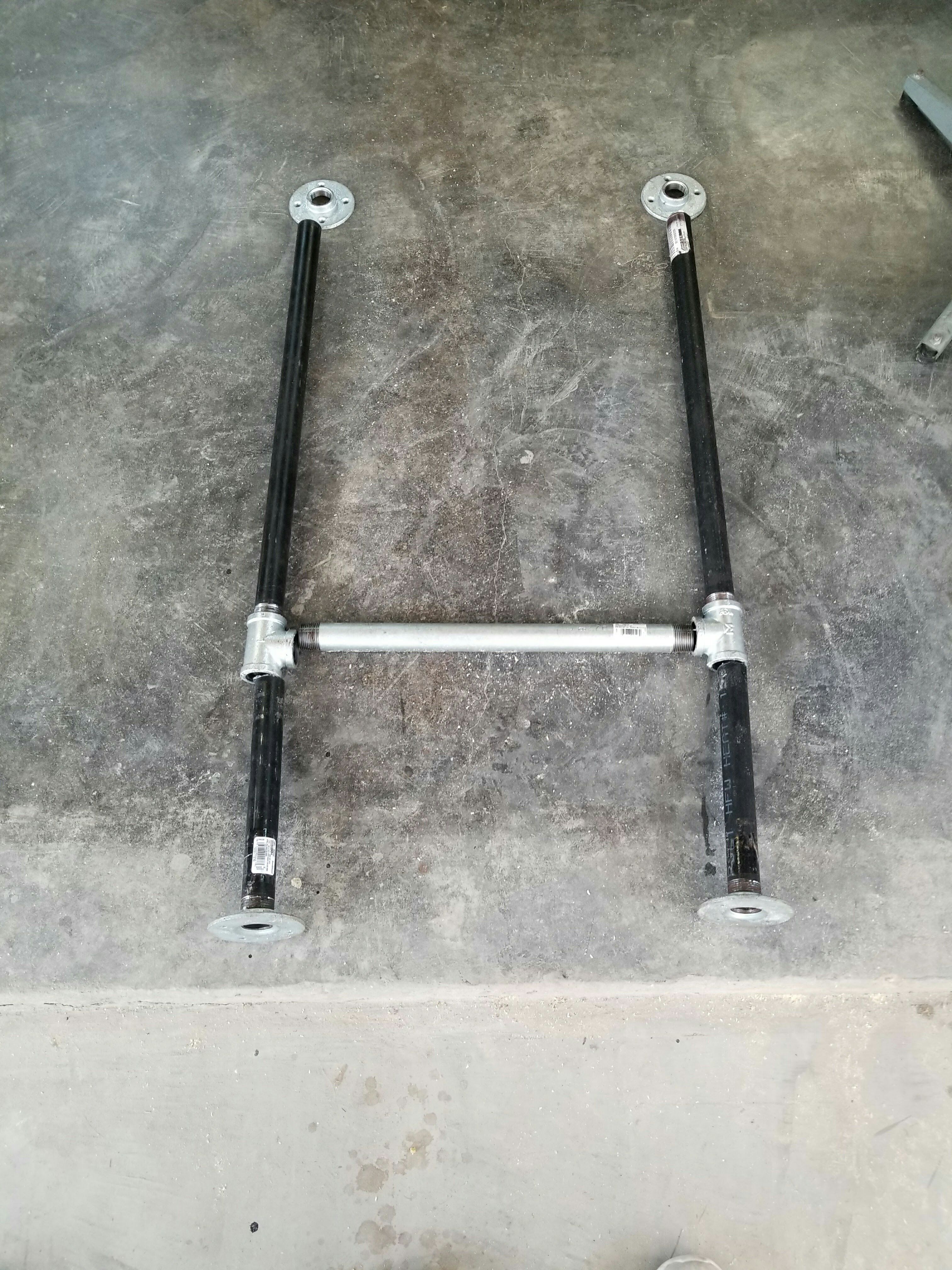
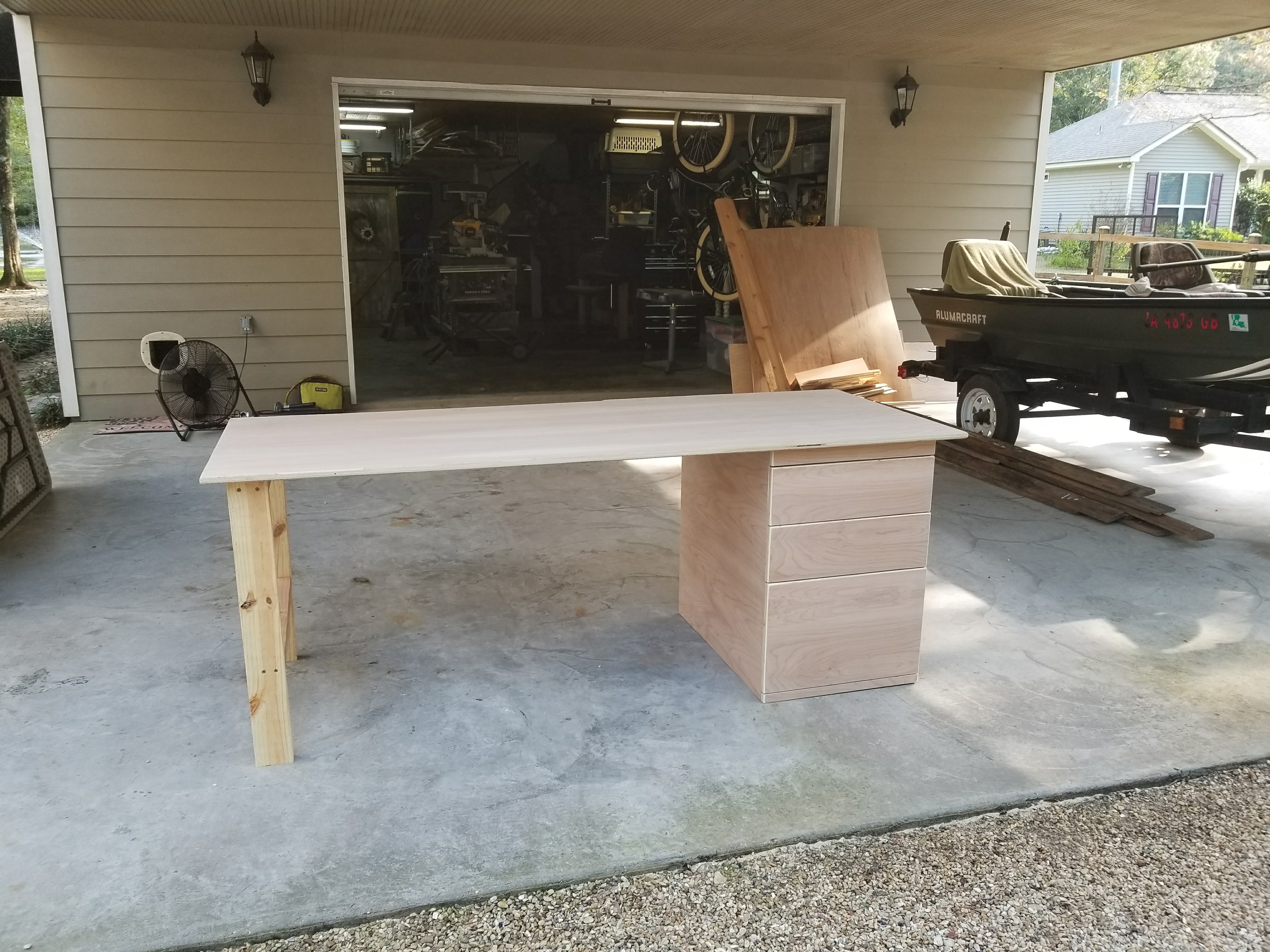
When the project began, I messed around with the idea of making the opposite end of the desk top sort of float on the wall, but I ultimately decided against it after seeing some scrap iron pipe I had lying around. It wasn't enough, of course, but it got my brain going. Unfortunately, neither my Dad or I could find his 1" pipe tap, so I had to build a set of temporary legs, until my Dad could find the time to cut and thread the pipe at work. In the mean time, I fashioned the set of temps out of some scrap 2" x 4" I'd found. Hey, it worked! Plus, I got my first look at that which I had wrought, and I have to say, I was diggin' it!
I spent the following 3.5 hours sanding from 60 grit, all the way down to 220 grit on every surface. This was time consuming, and back breaking but in the end, I'm so glad I spent the extra time, as the finish turned out all the better for it. I even managed to make some wood filler with saw dust and wood glue, to fill a couple small defects in the drawer faces.
Why the Hell Did I Buy a Two-story?! (a.k.a. the Installation)
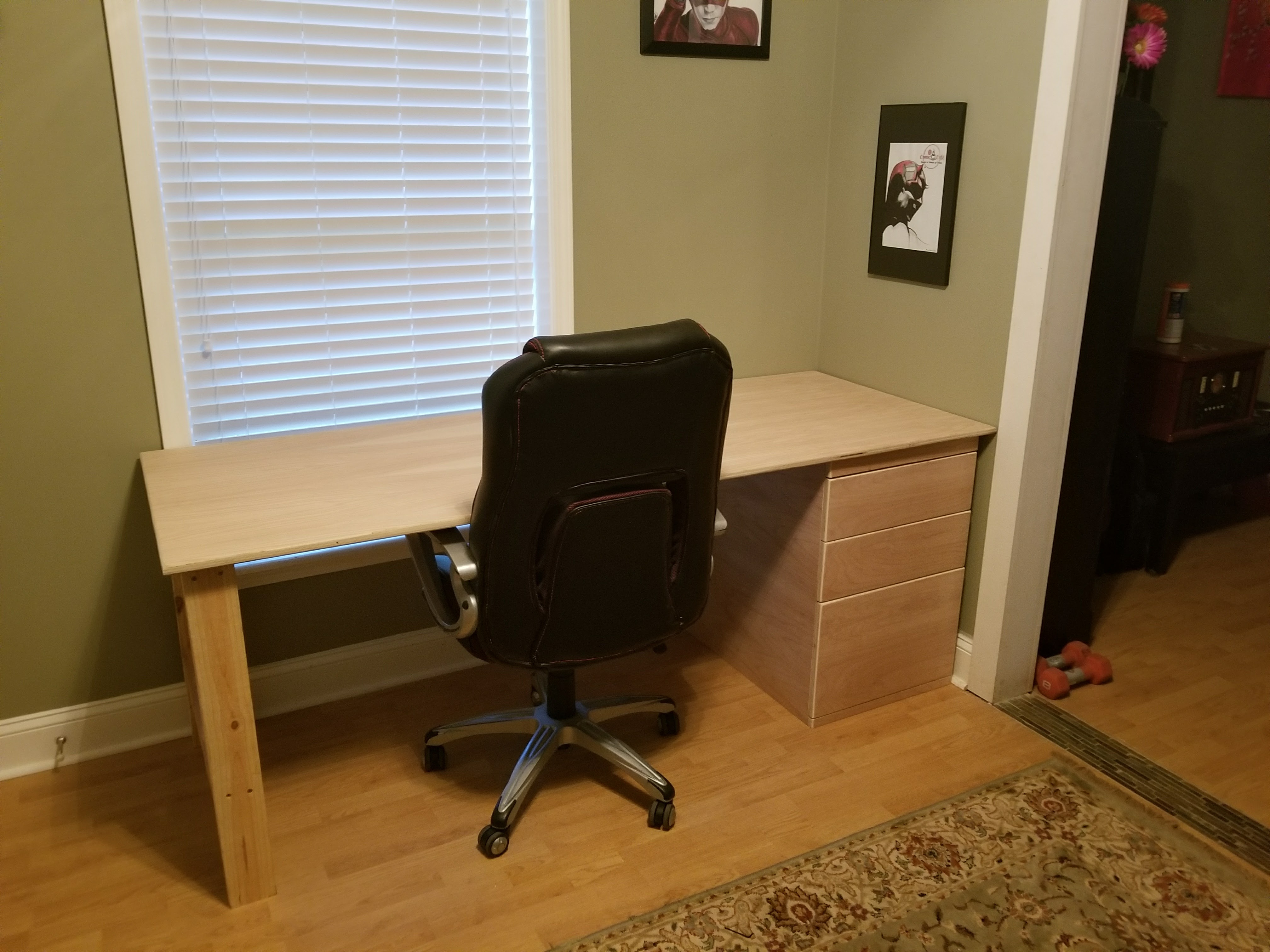
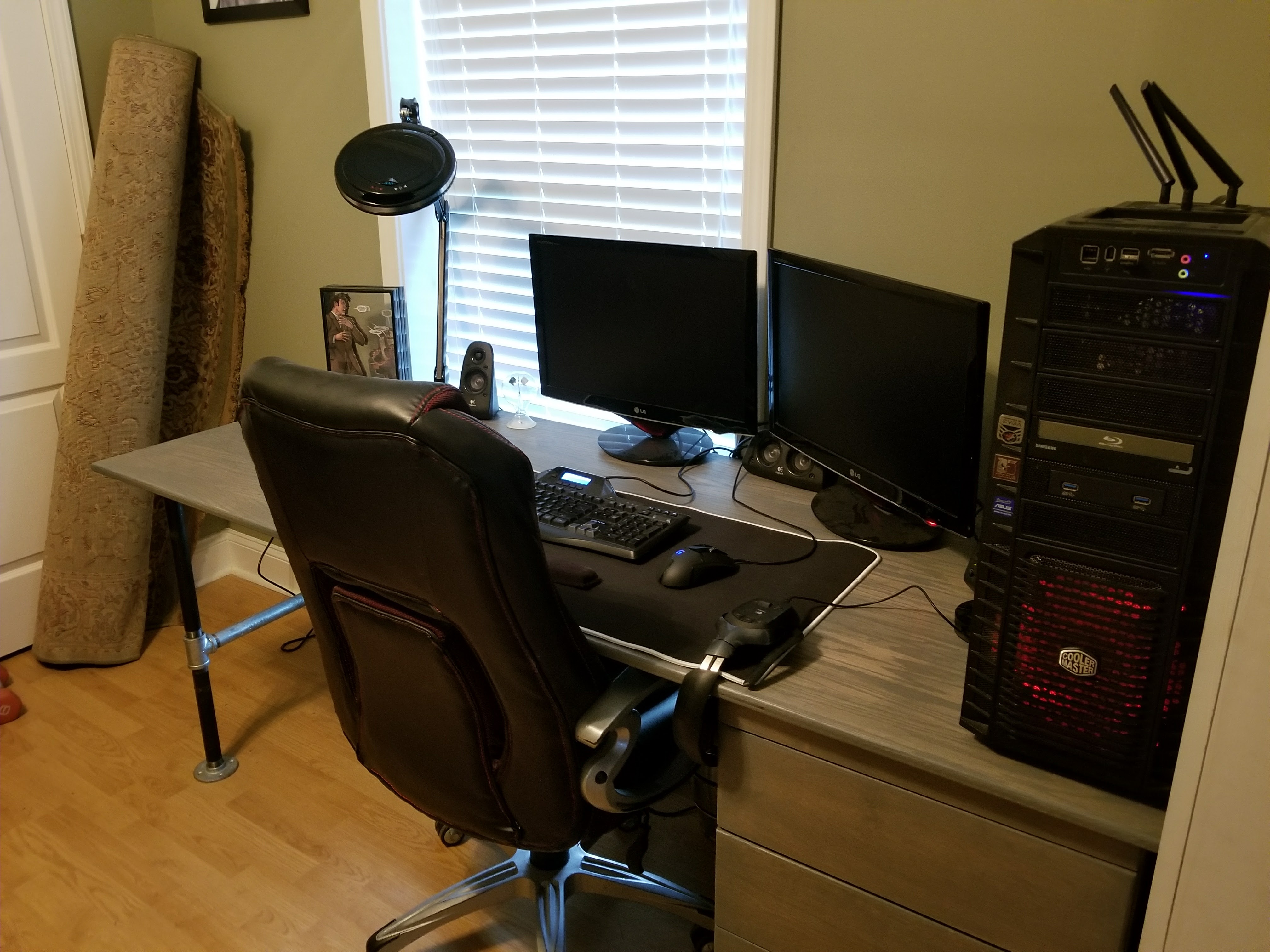
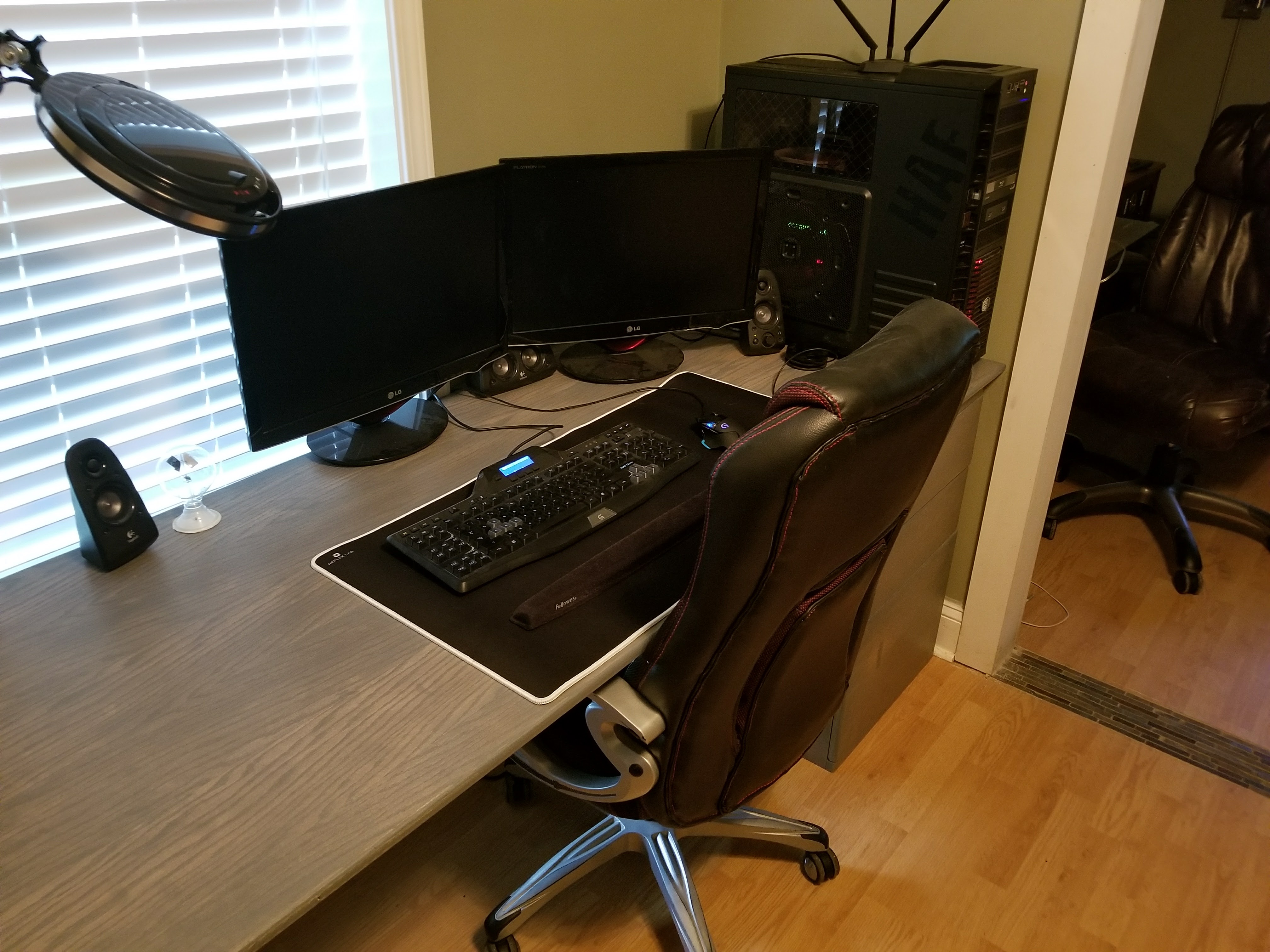
Finally, it was time to bring it all upstairs, assemble it, and see what it looked like. I assembled my hardware, and decided where I needed to drill for grommet holes. To date, I only put one directly behind my computer tower, but I've got plans for another on the left side. Maybe even with a pop-up power outlet, or a USB hub. They're pretty inexpensive, and amazon has a ton of great options.
Last step was to break it all apart, one last time, and put the finish on it. I used Varathane's Weathered Grey stain: two coats. Then three coats of their matte finish polyurethane, all while sanding between each and every application. The final finish provided a very smooth writing surface, and seems very durable, to boot. All said, I couldn't be happier with how it turned out.
Bling (a.k.a. the Finishing Touches)
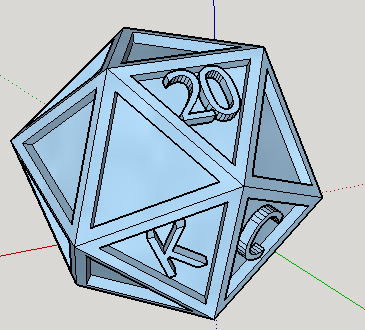
I put it all back together, after the poly had cured, and even bought a new LED work lamp with a built-in magnifying glass to help with those tiny soldering projects we all struggle with so much! The great thing is the arm reaches nearly clear across the desk, so I'm covered in terms of lighting!
Now the observant among you may have noticed one omission of hardware: drawer pulls. Well, enter the attached CAD model screenshot. As it may not have been completely obvious, I am a geek, and proud of it! So I needed the final little touch of geek, to end this build. That is why I've elected to have my drawer pulls 3d printed. I designed a model of a 20-sided die (a.k.a. an icosahedron), and after some clean-up on the model, I'll be submitting it to an online 3d printing service. I've included the SketchUp files as well as an STL export for those interested.
Well, there's my desk. I start working from home in the next couple of weeks, and I can't wait to really put the desk through it's paces. I haven't found a complaint, yet, but I'll keep everyone posted if/when I start making modifications and additions to it. Thanks for the read, all, and I hope you've enjoyed my first instructables post!
-Kevin Cefalu